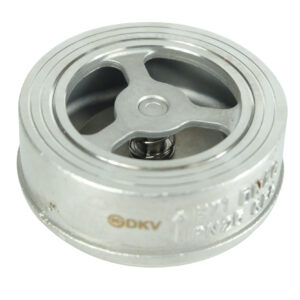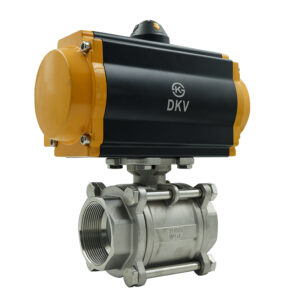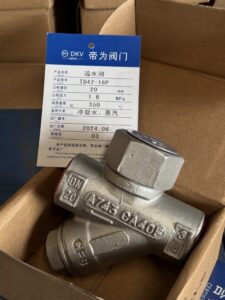
What Is a Check Valve and How Does It Work?
What Is a Check Valve and How Does It Work? Introduction — Why Check Valves Matter in Industrial Systems In every pipeline system, fluid needs
In industrial piping systems, valves play a critical role in maintaining flow direction, protecting equipment, and preventing contamination.
Two common types of valves designed for preventing reverse flow are the check valve and the backflow valve.
While both serve to prevent undesired backflow, their design, functionality, and typical applications differ significantly.
Choosing the wrong type can result in system inefficiencies, equipment damage, or safety hazards.
This article explores the differences, operational principles, and key selection criteria for engineers and procurement managers.
A check valve is a mechanical device that allows fluid to flow in one direction only.
It operates automatically without external intervention.
Check valves are commonly used in pipelines to protect pumps and compressors from backflow damage.
They can be of several types, including swing check, lift check, and wafer check valves.
A backflow valve, often referred to as a backflow preventer, is a more sophisticated device that not only prevents reverse flow but also protects potable water systems from contamination due to back pressure or back siphonage.
Backflow valves are widely used in municipal water supply, chemical dosing systems, and irrigation networks.
Procurement tip: While all backflow valves are check valves in principle, not all check valves provide the contamination protection features of a true backflow preventer.
Check valves operate automatically by responding to the flow of the medium.
When fluid flows in the desired direction, it pushes the disc, ball, or flap open, allowing flow.
When flow reverses, the mechanism closes against a seat, preventing backflow.
Common designs include:
Engineer’s advice: Consider pressure drop, flow rate, and maintenance accessibility when selecting a check valve type.
A backflow valve or preventer is typically designed with one or more check valves in combination with relief mechanisms to ensure that fluid cannot reverse into a clean water supply.
Two primary backflow scenarios exist:
Backflow preventers often include test ports, relief valves, or double-check assemblies to actively manage these risks, making them essential for potable water and critical process systems.
Procurement insight: Always verify local regulations—certain industrial or municipal projects require certified backflow preventers with testing provisions.
Feature | Check Valve | Backflow Valve |
Purpose | Prevents reverse flow to protect equipment | Prevents reverse flow and protects against contamination |
Design Complexity | Simple, mechanical | More complex, may include multiple checks, relief ports, and testing features |
Application | Pipelines, pumps, compressors | Potable water, chemical dosing, irrigation, critical process systems |
Certification | ISO, API (optional) | Certified for potable water per CE, NSF, or local regulations |
Tip: Confusing a standard check valve with a backflow preventer can risk system contamination, especially in drinking water or chemical systems.
Both valve types are widely used, but their applications differ:
Example: A municipal water treatment plant installed double-check backflow preventers at all hydrant connections to comply with local safety regulations, avoiding contamination risks during pressure fluctuations.
Understanding the difference between check valves and backflow valves is essential for engineers, maintenance teams, and procurement managers.
Choosing the right valve ensures system efficiency, protects equipment, and prevents contamination.
At DKV Valve, we provide certified check valves and backflow preventers tailored to your industrial projects.
📩 Contact DKV Valve today to request technical datasheets, project quotations, or customized valve solutions backed by 40+ years of manufacturing expertise.
Fill out the form below and we will contact you as soon as possible!

What Is a Check Valve and How Does It Work? Introduction — Why Check Valves Matter in Industrial Systems In every pipeline system, fluid needs

What Is a Pneumatic Valve ? In modern industries, the performance of a valve often determines the efficiency, reliability, and safety of a process system.Pneumatic

What Is a Steam Trap & How Does It Work? Introduction — The Hidden Hero in Steam Systems In every industrial steam system — whether

Why Use a Globe Valve Instead of a Gate Valve? A Practical Guide for Engineers & Procurement Managers Introduction — Making the Right Valve Choice

What Is the Main Advantage of a Butterfly Valve? Introduction — why this question matters When you plan an industrial piping system, valve selection affects

Electric Valves: Comprehensive Guide for Industrial Applications In modern industrial automation, electric valves play a critical role in regulating fluid flow with precision and reliability.
Poly Center T41601, Le Cong Town, Shunde District, Foshan City, Guangdong Province, China
We will contact you within 1 working day, please pay attention to the email with the suffix “@dkvchina.com”.
We will contact you within 1 working day, please pay attention to the email with the suffix “dkvchina.com”.